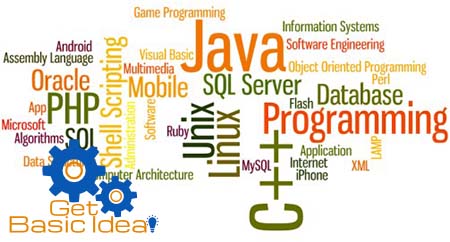What is a Programming Language?
Programming language can be defined as a set of keywords, symbols, and a scheme of rules for giving commands so that humans can communicate with the computer. The provision of instructions to the computer is the main function of a programming language. The computer can perform a processing activity by executing the instructions given by the programming language. Each programming language has a set of symbols with special meaning and a unique set of rules which is called the syntax of the language. The language syntax denotes the method of combining the symbols to create statements that have the ability to convey significant instructions to the CPU.
The Evolution of Programming Languages.
The evolution of programming languages can be classified into five generations. More user-friendly programming languages were developed over time according to the requisites of computer users.
[g_article_ads]
1. First Generation Computer Languages.
- The first generation of computer language is machine language.
- It is a low-level language that uses binary codes (0 & 1).
- Programs written in machine language can attain high efficiency at run time since no translation is required due to using of binary codes.
- But need long string binary codes even to execute a very simple task.
- Programming with machine language is tiresome and error-prone.
2. Second Generation Computer Languages.
- Second generation language was developed to overcome the challenges faced due to machine language.
- Known as assembly or symbolic language.
- Assemblers can convert instruction written with assembly language to machine language.
- Assembly programs are more efficient and require only the least memory compared to programs developed using high-level programming languages.
3. Third Generation Computer Languages.
- Third-generation languages are high-level languages.
- They are known as a procedure or problem-oriented language.
- These third-generation languages are developed in order to overcome shortcomings of assembly languages.
- It is very easy to learn since these languages are much closer to the English language.
- The programs designed with third-generation languages are converted to machine codes by an interpreter or compiler which is acts as a translator.
4. Fourth Generation Computer Languages.
[g_article_ads]
- These are procedural languages having high productivity.
- The programmer has to define what to do not how to do it. So non-programmers also can design a program easily.
- Structures Query Language (SQL) which is used with databases is the most common fourth-generation language nowadays.
Admin of Get Basic Idea / Senior Solution Architect.


